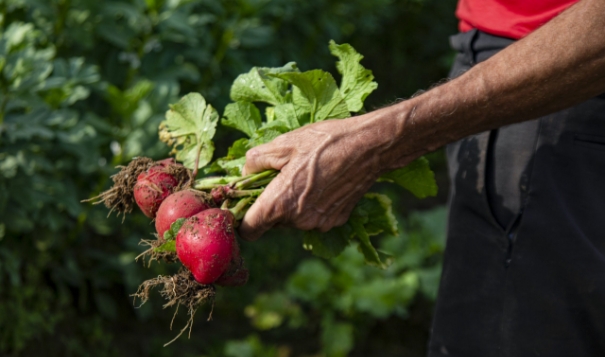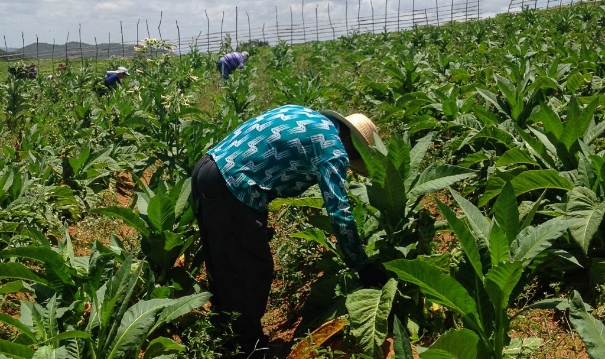
General information

Diversification in tobacco growing area in the state of Rio Grande do Sul, Brazil.
Photo: Marcelo Moreno
What does Article 17 of the WHO FCTC say?
Under Article 17, provision of support for economically viable alternative activities, “Parties shall, in cooperation with each other and with competent international and regional intergovernmental organizations, to promote, as appropriate, economically viable alternatives for tobacco workers, growers and, as the case may be, individual sellers.”

Harvesting tobacco leaves in the state of Alagoas, Brazil.
Photo: Danielle Barata
What does Article 18 of the WHO FCTC say?
Under Article 18, protection of the environment and the health of persons, Parties address concerns regarding the serious risks posed by tobacco growing to human health and to the environment. Article 18 says: “In carrying out their obligations under this Convention, the Parties agree to have due regard to the protection of the environment and the health of persons in relation to the environment in respect of tobacco cultivation and manufacture within their respective territories.”
Policy options and recommendations on economically sustainable alternatives to tobacco growing (in relation to Articles 17 and 18)
The Decision FCTC/COP6(11) adopted Policy options and Recommendations on Article 17 and 18 at COP6 noting that the WHO FCTC does not aim to penalize tobacco farmers, but aims to promote economically viable alternatives for tobacco workers, growers, and, as the case may be, individual sellers, reaffirming the need to safeguard the livelihoods of tobacco farmers and workers. The decision considers that the success of the WHO FCTC will result in reducing consumption and bears in mind that Articles 17 and 18 of the WHO FCTC is aimed at increasing the number of livelihood options, with a view to assisting tobacco growers and workers.
The Policy Options and Recommendations on Economically Sustainable Alternative to Tobacco Growing in relation to Articles 17 and 18 of the WHO FCTC aim to assist Parties to meet their obligations under Articles 17 and 18 of the WHO FCTC. The document has 6 chapters and 2 Appendix as follows.
Chapter 1. Introduction
Introduction provides a snapshot of the global tobacco production chain (trends, labour demand), alternative crops and livelihoods, occupational risks for tobacco workers and growers, impact on employment and social disruption, environmental impact, and corporate practices undermining the implementation of sustainable alternatives to tobacco growing.
Chapter 2. Purpose, scope and applicability
Purpose, Scope, and Applicability informs that the Guidelines provide Parties with a general working framework within which they may adopt the comprehensive policies and effective measures required to fulfill their obligations under Articles 17 and 18 of the WHO FCTC.
Chapter 3. Guiding principles establish six principles that guide the implementation of Articles 17 and 18 by Parties, as follows
- Principle 1: Livelihoods diversification should be the concept guiding the implementation of economically sustainable alternatives to tobacco growing.
- Principle 2: Tobacco growers and workers should be engaged in policy development concerning Articles 17 and 18 in line with Article 5.3 of the WHO FCTC and its guidelines.
- Principle 3: : Policies and programmes to promote economically sustainable alternative livelihoods should be based on best practices and linked to sustainable development programmes.
- Principle 4: The promotion of economically sustainable alternative livelihoods should be carried out within a holistic framework that encompasses all aspects of the livelihoods of tobacco growers and workers (including the health, economic, social, environmental, and food security aspects).
- Principle 5: : Policies promoting economically sustainable alternative livelihoods should be protected from commercial and other vested interests of the tobacco industry, including leaf companies, in accordance with Article 5.3 of the WHO FCTC and its guidelines.
- Principle 6: Partnership and collaboration should be pursued in the implementation of these policy options and recommendations, including in the provision of technical and/or financial assistance.
Chapter 4. Identifying and developing effective strategies
for alternative crops and livelihoods and for protecting tobacco growers and the environment from harms related to tobacco production, recommends strategies to address diversification and the transition period from tobacco growing to alternative livelihood in line with the Guiding Principles. It provides recommendations on the following implementation areas with the corresponding expected results:
- Promoting research
- Developing educational and training programmes for workers and growers
- Removing obstacles to diversification or the shift to alternatives to tobacco farming
- Keeping coherence among the policies of different ministries/departments
- Identifying and regulating tobacco industry strategies that promote tobacco farming and the manufacture of tobacco products
- Mainstreaming alternative crops/livelihood options into government rural development programmes
- Establishing mechanisms within the existing system to support alternative livelihoods
- Setting up information and support centres for alternative livelihoods
- Ensuring the participation of civil society
- Ensuring social, health, and environmental protection in tobacco-growing regions
Chapter 5. Monitoring and evaluation
Monitoring and evaluation provides examples of measures to monitor and evaluate the implementation of Articles 17 and 18 and provides for the use of key indicators in the following aspects:
- Implementation of Article 17 – development of an alternative livelihood model
- Implementation of Article 18
Chapter 6. International cooperation
International cooperation provides guidance on aspects of international cooperation in the implementation of Articles 17 and 18 provisions with proposed actions as follows
- Promotion of opportunities for economically sustainable livelihoods and development of markets in the context of sustainable development and poverty eradication
- Cooperation with relevant national, regional, and international organizations
- Assistance and cooperation in capacity building
- International information exchange
- International cooperation and the role of the Convention Secretariat
